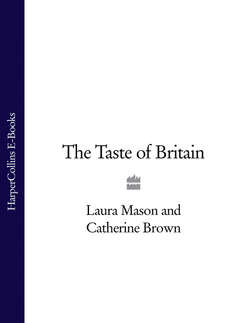Читать книгу The Taste of Britain - Hugh Fearnley-Whittingstall - Страница 347
HEAVY-BODIED SHEEP WITH GOOD CONFORMATION. MEAT IS DARK, WELL-FLAVOURED, CLOSE-TEXTURED. HISTORY:
ОглавлениеRomneys are white-faced, naturally long-tailed, and related to the Cheviot, Ile de France, Texel and Welsh Mountain. Their name is that of their native district, Romney Marsh. The stock which may have given rise to the breed were imported in about the second century AD by the Romans. Large numbers of sheep were maintained at Romney by the medieval Priory of Canterbury—whose breeding flock was at Thanet—for the sake of their wool, milk and meat. The relative importance of these products to the strain has waxed and waned. At present it is primarily a wool sheep. In the past, they were shorn of wool in the summer of their birth and sold as store lambs to be finished by arable farmers, graziers and butchers. They were slaughtered for meat as hoggets (over a year old). Often they were kept to 2 years, by which time they became very fat.
The Romney was mentioned by Youatt (1837) as crossed with the Southdown, popular further along the coast. The progeny was suited to meat production. The Kent and Romney Marsh Sheep Breeders Association was founded in 1895 and the breed has been much exported.
